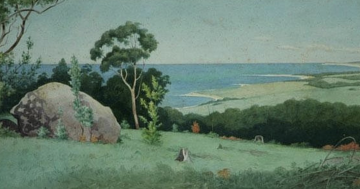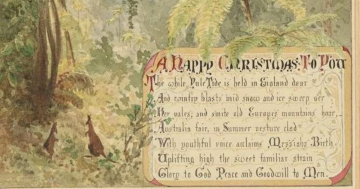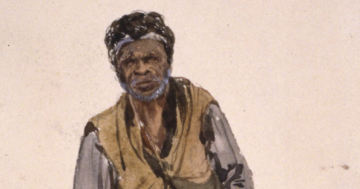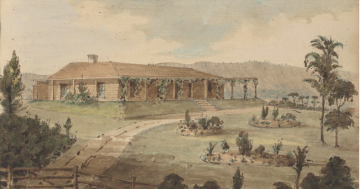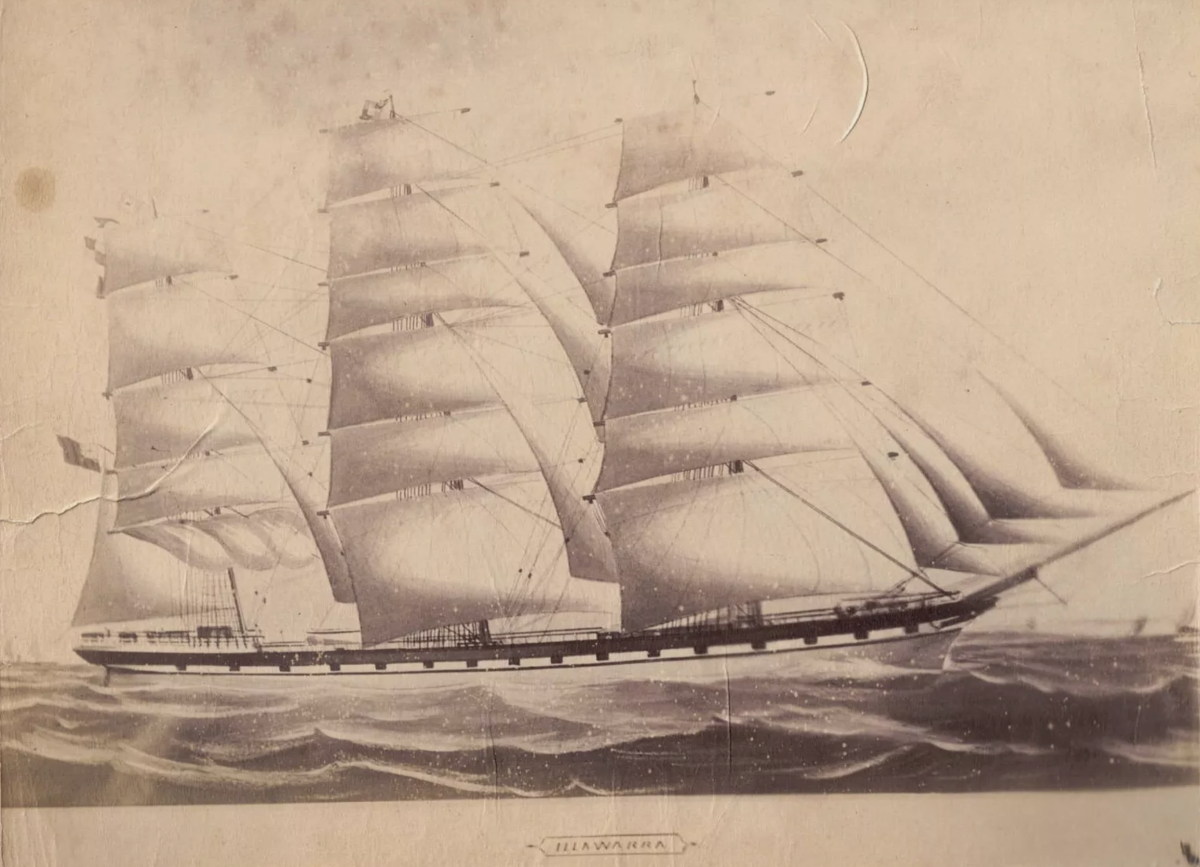
The ship Illawarra of London. The photograph of a painting was probably taken by the then 24-year-old William Hall junior, the eldest son of Scottish-born photographer William Hall trading in the 1880s as Hall & Son in Brighton, England. The original maritime artist is unknown.
The 1881 iron full-rigged three-masted clipper named Illawarra was built by Dobie and Co at Govan Shipyards in its “Old Yard” on the Clyde River at Glasgow.
The ship was launched in October 1881 for owners Devitt and Moore and used mostly to bring migrants to Australia and then ship wool back to Europe.
When it sailed from London this remarkable craft could make the voyage from England to Australia in under 90 days. Oddly, despite its name, the ship never called into any Illawarra or South Coast ports.
By 1899 it was being used at Hobson’s Bay in Melbourne as a training ship and by 1907 was based at Tvedestrand in Norway.
It ended its life in 1912 abandoned at sea on a voyage from Leith to Coquimbo in Chile with a cargo of coke.
An earlier vessel named Illawarra had been constructed at Waterford in Ireland in 1849 with a net weight of 66 tons. We know little else about her. Earlier she had been owned by the General Steam Navigation Company, one of the three competitors servicing the Illawarra and South Coast. She was only to remain with the amalgamated company until 1861.
However, even earlier, David Lindsay Waugh of Waughope in Jamberoo (but born in Edinburgh in 1810) had married a Miss Hope, of Camden, in 1851 and thus the name of their famed Jamberoo farm and elaborate farmhouse – Waughope – was established.
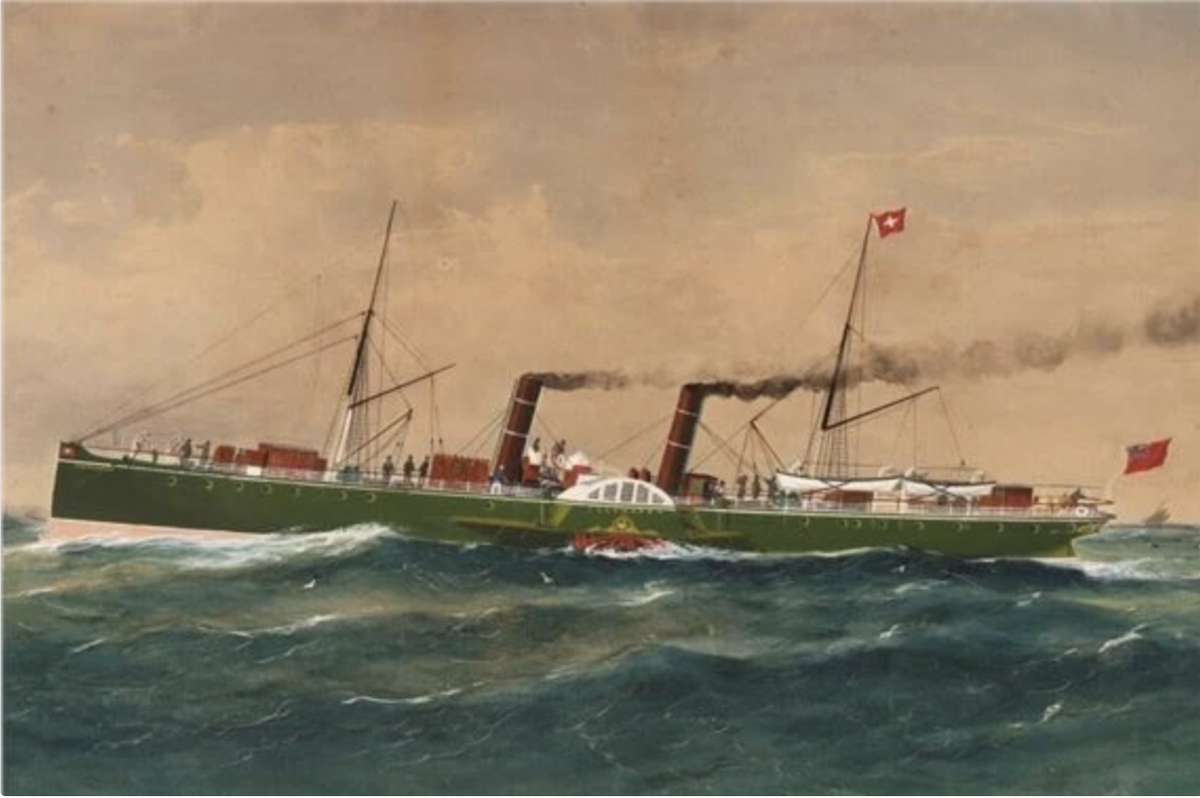
William Forster’s watercolour and gouache of Paddle Wheel Steamer Illawarra, 1880. From the Wollongong Art Gallery collection.
By 1853 Waugh was appointed chairman of directors of the Illawarra Edinburgh: “The district has long felt the want of steam communication with Sydney, and nine months ago we started a company to raise £7000, in shares at £5 each. I took 40 shares and each of the family have a share or two between them. Upwards of £6000 were taken by the inhabitants of the district. We had a charter of incorporation from the Legislative Council, and among the directors I was elected chairman which has given me a great deal to do. We sent an agent home to bring a steamer out in June last, to be called the “Kiama.” We expect it to return at present rates from 25 to 50 per cent, when fairly started.”
The newly amalgamated company transported passengers and a range of produce, including livestock, and hence it became known as the “Pig and Whistle Fleet”. And it was said, either in jest or in truth, that “their ships would wait an hour for a pig but not a minute for a passenger”.
The Pig and Whistle Fleet acquired a paddle-wheel steamer named Illawarra to enter the coastal trade in 1880.
It made its last trip from Sydney to Wollongong in 1904 and Captain John Garde, who had been its master for all its previous voyages, boasted “that no boat, intercolonial or coaster, came any way near the Illawarra, and that she could show her heels to the best of them under any circumstances”.
But, with the advent of the rail line to Sydney in the late 1880s, the days of the passenger coasters were coming to an end, as Captain Garde reflected: “The scene is changed. The old salty dogs have had to give in to the iron horse, not that the travelling by rail is any pleasanter but simply owing to the fact that competition has become keener and the busy man is compelled to travel by the quickest mode available.”
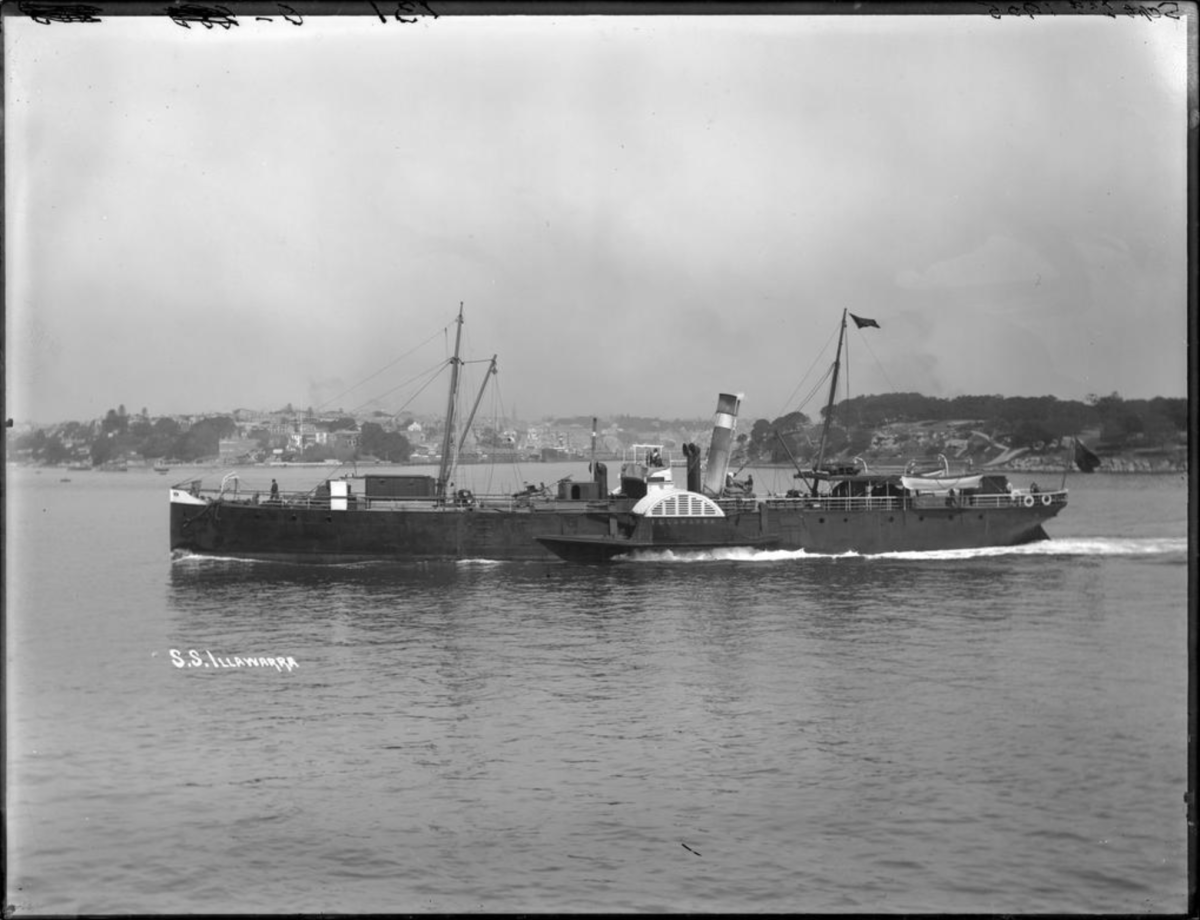
The Illawarra leaving Sydney presumably sometime after December 1885 when its low-pressure cylinder had failed while sailing between Wollongong and Kiama and extensive repairs and alterations seem to have been deemed necessary. Photo: University of Otago Library, Ian Farquhar Collection.
Nonetheless, very late in its life the paddle steamer Illawarra, because of its relatively shallow draft, was put to use again in 1904 when it “made the passage up the river to Nowra for the first time … on a draught of 7ft 3in”: “Pilot Bishop, of Crookhaven Heads station, accompanied Captain Swanson on the passage, and the once popular passenger boat dropped anchor in midstream nearly opposite the mouth of Bomaderry Creek and just below the line of rocks which have for so long obstructed navigation and which are shortly to be removed by the government, with the assistance of the Illawarra Steam Navigation Company.”
The arrival of the Illawarra on the Shoalhaven River was said to be going to “open a new era in the local shipping trade and prove, of considerable advantage to Nowra businesspeople and all other consignees and consignors.”
But with extension of the rail line from Sydney all the way to Bomaderry in 1896, such dreams were already mostly out of date and exceedingly unlikely to come to fruition.
The days of coastal passenger traffic were fast coming to an end – even though my father, a merchant seaman, still sailed one of the last freights of coal to Sydney from a still-functioning Bellambi jetty as late as the 1950s.









